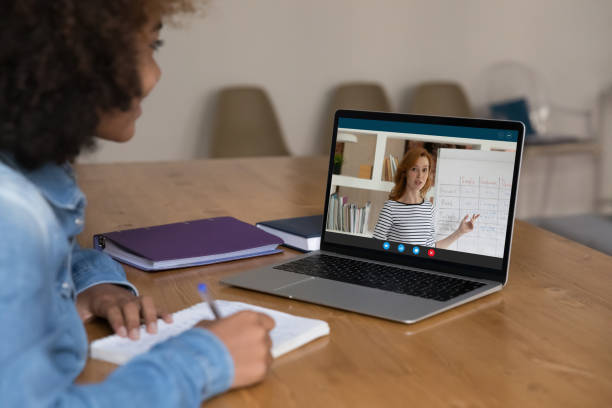Strategies for Improving Classroom Engagement
Keeping students engaged in the classroom is one of the biggest challenges teachers face. In a world filled with constant distractions — from social media to short attention spans — capturing and maintaining students’ attention requires creativity, adaptability, and thoughtful strategies.
Engaged students are more likely to grasp concepts, participate actively, and develop a love for learning. So, how can educators foster an environment that encourages curiosity, interaction, and enthusiasm? Let’s dive into some powerful strategies to boost classroom engagement!
🧠 1. Build Strong Teacher-Student Relationships
Students are more engaged when they feel connected to their teacher. Building trust and showing empathy helps create a safe space where students feel valued and motivated to participate.
🔑 Tips:
- Learn students’ names and interests.
- Greet students personally at the door.
- Show genuine interest in their well-being and aspirations.
👉 Why it works: When students feel seen and heard, they’re more likely to invest in the learning process.
🎲 2. Incorporate Interactive Activities
Passive lectures can lose students’ attention quickly. Instead, integrate hands-on activities, group discussions, and problem-solving tasks to keep the energy flowing.
🔑 Examples:
- Think-Pair-Share: Let students discuss a topic with a partner before sharing with the class.
- Brainstorming Sessions: Encourage collaborative idea generation.
- Role-Playing: Let students act out historical events, book scenes, or scientific processes.
👉 Why it works: Interactive activities promote active learning, making concepts more memorable.
📱 3. Use Technology to Your Advantage
Today’s students are digital natives — so why not meet them where they are? Technology can make lessons more dynamic and cater to different learning styles.
🔑 Ideas:
- Kahoot! or Quizizz: Fun, game-based quizzes for review sessions.
- Padlet or Jamboard: Collaborative digital boards for brainstorming and sharing ideas.
- Educational Videos: Use platforms like YouTube or TED-Ed to add visual and auditory stimulation.
👉 Why it works: Technology adds variety and excitement, keeping students curious and engaged.
✍️ 4. Encourage Student Voice and Choice
Students are more invested in their learning when they have a say in it. Let them take ownership of their education by making choices and expressing their opinions.
🔑 Strategies:
- Choice Boards: Let students choose from a variety of assignments or project formats.
- Classroom Jobs: Give students leadership roles (e.g., timekeeper, tech assistant).
- Student-Led Discussions: Let students guide discussions or present mini-lessons.
👉 Why it works: When students feel like their opinions matter, they become more motivated and confident learners.
🧩 5. Use Real-World Connections
Help students see the relevance of what they’re learning by connecting lessons to real-life situations. This makes content more meaningful and sparks curiosity.
🔑 Ideas:
- Current Events: Link lessons to current news or trending topics.
- Guest Speakers: Invite professionals to share real-world applications of what students are learning.
- Field Trips or Virtual Tours: Show students how concepts play out in the real world.
👉 Why it works: When students understand why a subject matters, they’re more likely to stay engaged.
🎯 6. Break Lessons into Manageable Chunks
Long, uninterrupted lectures can drain students’ focus. Instead, use the “chunk and chew” method — breaking content into small sections with time for reflection or practice.
🔑 Example Lesson Structure:
- 10–15 min mini-lesson → 5 min discussion
- 10–15 min activity → 5 min recap
👉 Why it works: Smaller, digestible chunks of information are easier to absorb and retain.
🧩 7. Gamify the Learning Experience
Games make learning fun and foster friendly competition. Gamification can turn even the most complex concepts into enjoyable challenges.
🔑 Examples:
- Point Systems: Reward participation, collaboration, or critical thinking.
- Escape Rooms: Turn lessons into problem-solving missions.
- Classroom Leaderboards: Track progress and celebrate achievements.
👉 Why it works: Games add excitement and motivate students to engage with the material actively.
❤️ 8. Foster a Growth Mindset
Students may disengage if they feel like failures after making mistakes. Promote a growth mindset by celebrating effort and perseverance.
🔑 Ways to Encourage Growth Mindset:
- Praise Effort, Not Just Results: Acknowledge hard work, not just correct answers.
- Normalize Mistakes: Treat errors as learning opportunities.
- Set Personal Goals: Help students track their progress over time.
👉 Why it works: When students believe they can improve, they’re more willing to stay engaged and try again.
👩🏫 9. Create a Positive Classroom Environment
A classroom where students feel respected, safe, and encouraged fosters higher engagement.
🔑 Tips:
- Classroom Rules: Set clear expectations for behavior and participation.
- Inspiration Wall: Display students’ work and inspirational quotes.
- Community Building: Regularly include team-building activities.
👉 Why it works: A supportive environment makes students more willing to take academic risks and participate.
🚀 10. Reflect and Adapt Regularly
No strategy works perfectly for every group of students. Continuously assess what’s working and make adjustments.
🔑 Reflection Ideas:
- Student Feedback Surveys: Ask students what they enjoy or struggle with.
- Self-Reflection: After lessons, note what engaged students most (and least).
- Peer Observations: Collaborate with fellow teachers to share ideas.
👉 Why it works: Regularly fine-tuning your approach ensures that your teaching stays fresh, effective, and student-centered.
Frequently Asked Questions – FAQs
In this section, I will provide you with FAQs and answers on “Strategies for Improving Classroom Engagements”. Keep on reading friend.
1. Why is classroom engagement important?
Classroom engagement is essential because it leads to better academic outcomes, higher retention rates, and more meaningful learning experiences. When students are actively involved, they understand concepts more deeply, develop critical thinking skills, and stay motivated to learn.
2. How can I tell if my students are engaged?
Look for signs like active participation, curiosity, thoughtful questions, peer collaboration, and students staying on task. If students are eager to share ideas, contribute to discussions, and show enthusiasm for activities, they’re likely engaged.
3. What are the biggest obstacles to student engagement?
Common obstacles include:
- Lack of relevance: Students may not see the value in what they’re learning.
- Monotonous lessons: Repetitive, lecture-heavy classes can bore students.
- Fear of failure: Students might disengage if they’re afraid of making mistakes.
- External distractions: Social media, personal issues, or lack of sleep can reduce focus.
Understanding these barriers helps you create strategies to overcome them.
4. How can I engage students who are naturally quiet or introverted?
Try low-pressure activities that allow quiet students to participate in their own way:
- Think-Pair-Share: Let them discuss ideas with a partner before speaking to the class.
- Digital Tools: Use apps like Padlet or Mentimeter for anonymous contributions.
- Written Reflections: Encourage journaling or exit tickets to express thoughts privately.
The key is to create multiple pathways for participation so every student feels comfortable contributing.
5. How can technology improve student engagement?
Technology adds variety and excitement to lessons. Tools like Kahoot! or Quizizz turn reviews into fun games, while platforms like Google Classroom make collaboration easy. Videos, simulations, and virtual tours can also bring abstract concepts to life.
The trick is to use technology as an enhancement — not a replacement — for interactive, hands-on teaching.
ALSO READ: Career Opportunities with a Teaching Degree
🎓 Final Thoughts: Engagement Is the Key to Deeper Learning
Engaged students are not just better learners — they’re more confident, curious, and excited about education. By building relationships, integrating technology, and making lessons interactive and meaningful, you can create a classroom where students don’t just attend but thrive.
The most effective engagement strategies often come from experimenting, learning what works for your students, and adapting your approach. So, start small, test different techniques, and watch your classroom come to life!






